Philips Fidelio B97 Review
If movie sound is your priority, the Philips Fidelio B97 gets an awful lot right
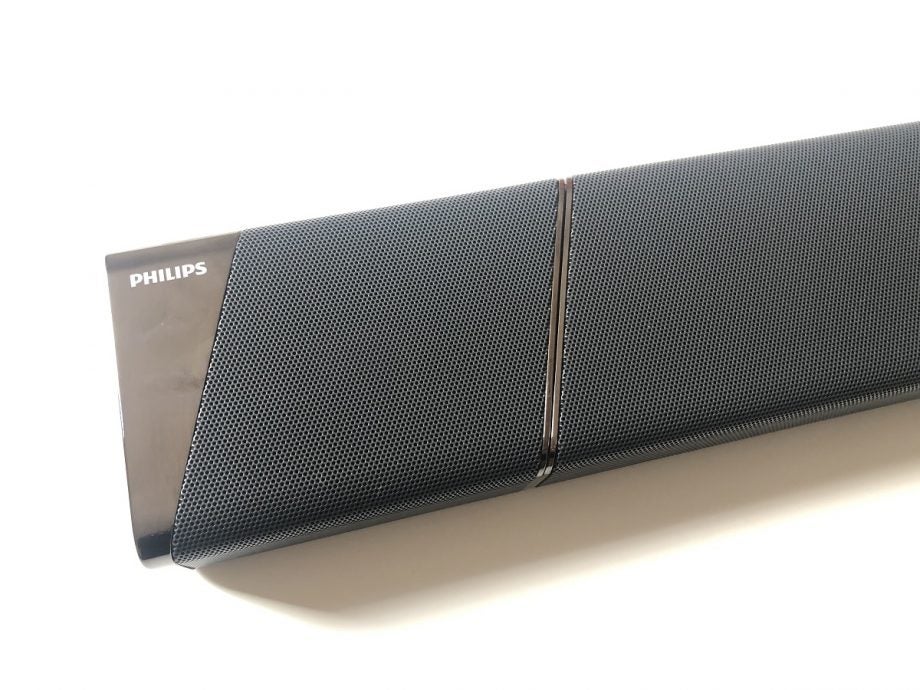

Verdict
If movie sound is your priority, and you’re not expecting shock and awe from the overhead aspect of Dolby Atmos sound, the Philips Fidelio B97 gets an awful lot right.
Pros
- Expansive, immersive and convincing movie sound
- Clever modular design and impressive finish
- Generally decent music reproduction
Cons
- Height effect not as pronounced as you might expect
- Full operation requires multiple apps
- Quite big – or, rather, long
Availability
- UKRRP: £999
Key Features
- 450 watts RMSServes up 450W of power to the speaker
- SurroundSupports Dolby Atmos and DTS:X
- Play-Fi compatibilitySupports multi-room audio through the DTS app
- Detachable speakerSpeakers come apart to create rear channels
Introduction
‘Soundbar’ might be too tentative a word to describe the Philips Fidelio B97. At a glance it looks soundbar-y, all right – but there’s a bit more to it than that.
Numerous drivers, including a couple that fire upwards to reflect off the ceiling, deliver a true 7.1.2-channel Dolby Atmos surround-sound experience. A wireless subwoofer promises cinematic low-frequency wallop. And detachable, wireless, battery-powered speaker modules put true surround-sound firmly on the menu.
Add in a stack of connectivity options, a sonic signature that’s intended to be just as impressive with music as it is with movies, and some IMAX Enhanced certification for good measure, and the B97 might justifiably be described as an ‘all-in-one’ just as readily as a ‘soundbar’.
But, of course, none of that counts for much if it doesn’t do the business where movie soundtracks and music are concerned. Especially not at this sort of money.
The Fidelio B97 is on sale from the end of June 2021 and, in the UK at least, ‘this sort of money’ turns out to be £999. Not an insignificant sum, it’s true, but if the Philips really is a full-on audio solution then that price might seem fair enough. Customers in the United States and Australia will have to wait a little longer for confirmation of the asking price (I’d estimate around $1499 and AU$1899).
Design
- Detachable modules become rear speakers
- Hefty subwoofer
- Impressive build and finish
Never mind the width, admire the height. It’s true that at 131cm wide (with speaker modules attached) the Philips is going to look a bit daft sitting beneath a more compact TV, but with a height of just 5.6cm at least it’s unlikely to foul the screen it’s underneath. Philips very considerately supplies fixings for mounting the B97 on a wall – just don’t be tempted to use its 12cm depth as a shelf.

The soundbar itself is smoothly constructed and impressively finished – that’s an awful lot of perforated metal to be shaped and fixed, but Philips has done a tidy job. The smoked aluminium accents around the magnetic unions with the detachable modules, the endcaps of the modules themselves and the little stands they sit in when being used as rear surround-sound speakers, give an up-market appearance, too.
The subwoofer, though no less conscientiously constructed, is a slightly more prosaic looker. But then you don’t need to have it on display if you don’t want to.
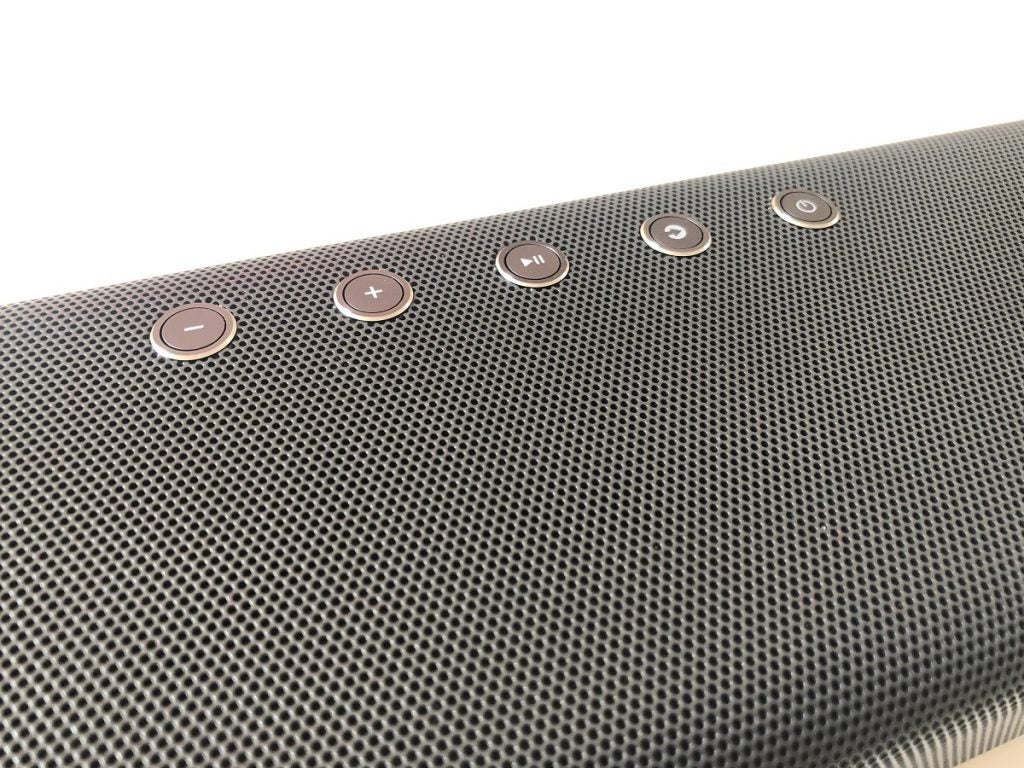
Features
- Numerous wired and wireless connectivity options
- 10 hours battery life for wireless speakers
- Voice-, handset- or app-control
I can acknowledge that a device as expensive as this is a) likely to be the main audio system in the room, and b) will need to work just as well when the TV’s off as when it’s on? So it will need a bit of flexibility where connections are concerned?
The B97 has flexibility, no two ways about it. The physical sockets run to a couple of HDMI inputs and an eARC-enabled output – and there’s 4K HDR passthrough capability here too – plus a digital optical input and a 3.5mm analogue socket. Where wireless is concerned, the Philips has Bluetooth 4.2, Apple AirPlay 2, Chromecast, Play-Fi and Spotify Connect all covered. You shouldn’t have any problems getting the content you’re interested in on board.
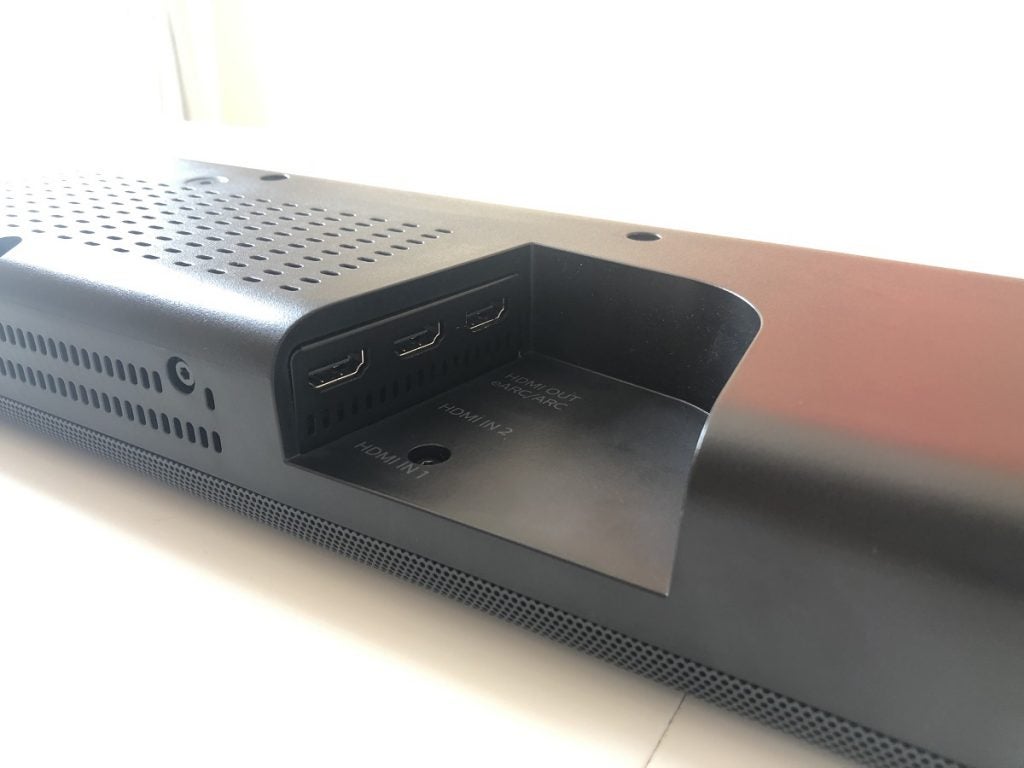
Once it’s on there, it’s subject to an awful lot of amplification. All in, the B97 can muster 888 watts of peak power (or, more realistically, 450 watts RMS). A solid 240 watts of that is given over to the subwoofer – it powers an 8in downward-firing driver that’s augmented by a reflex port. So that’s the ‘.1.’ taken care of.
The rest of the B97’s ‘7.1.2’ configuration is handled by the main soundbar and the detachable modules. The main body of the bar takes care of left, right and centre channels. Each channel is delivered by a pair of forward-facing 3.5in ‘racetrack’ drivers, and there’s a 19mm soft-dome tweeter at either end of the bar. They’re arranged to give the best chance of offering a proper stereo image when listening to music and to give as much width to the sound as possible when listening to a movie soundtrack.
At the top of the bar there are a couple of 2.5in full-range drivers – they each sit in a little recess and fire at a 70-degree angle. Here’s where the ‘.2’ channels of height information originates.
The detachable modules each have one of the 3.5in ‘racetrack’ drivers and one of the 19mm tweeters. When they’re locked in position at either end of the main soundbar, the big driver faces forwards and the tweeter fires from the end – the tweeter is angled and horn-loaded, to give even more width to the Philips presentation.
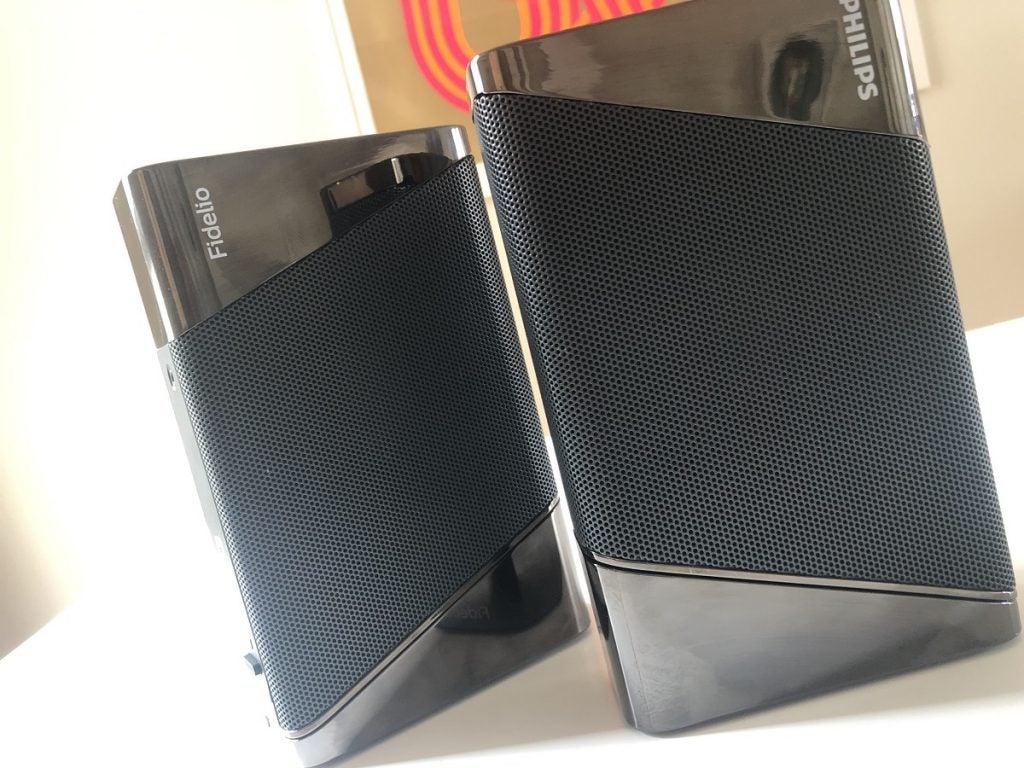
Detach them and stand them in their neat little cradles to act as wireless rear speakers, though, and their tweeter is disabled – this is because Philips is interested in a spatial effect, rather than an obvious point-source of sound. And anyway, when they’re detached they reveal another, identical tweeter at the end of the main bar.
So, the Fidelio B97 is almost worth the asking price in speaker drivers alone.
Controlling all these drivers and all this power can be done several ways. There’s the Philips ‘Sound’ app, which works in conjunction with the DTS Play-Fi app – most of your major controls are available here, as well as the ability to integrate the B97 into a wider multi-room set-up.
There are a few physical controls on the top of the main soundbar, for those staunch old-school operators, or at the opposite end of the scale the B97 can be operated via Amazon Alexa or Google Assistant – as long as there’s a smart speaker on the common network. Or you can use the (small, tidy but undeniably cheap feeling) remote control handset.

EQ adjustment, individual channel gain level adjustment and suchlike is achieved via yet another app, called ‘PS Fine Tune’. Bear in mind this app is in addition to the ‘DTS Play-Fi’ and ‘Philips Sound’ apps you already need to explore the B97’s full functionality.
And then bear in mind that if you select your Spotify account, say, in the ‘Philips Sound’ app you’ll be invited to open the Spotify app. Four apps, one soundbar. The idea may strike you as a little odd – I couldn’t possibly comment.

Sound quality
- Wide, immersive presentation
- Real depth and punch from the sub
- Choose your music playback options carefully
So you’ve positioned the B97 neatly beneath your TV, or used the provided fixings to attach it to the wall. You’ve delved into the endless selection of control apps to get the Philips set up just so. All that remains is to get a demonstration-friendly Dolby Atmos soundtrack on board and you’re good to go.
Formula 1: Drive to Survive on Netflix may be unintentionally hilarious more often than not, but there’s no denying its Dolby Vision/Dolby Atmos specification makes it look and sound an absolute treat. And in broad terms the Philips makes the best of its soundtrack. ‘Broad’, in fact, is as good a place as any to start when describing the B97 sound.

There’s real width to the soundstage the Philips produces. Effects movement across the front three channels is pronounced, and the centre channel is detailed and distinct enough to make sure dialogue projects well ahead of the constant engine roar.
Because the relatively sizable ‘racetrack’ drivers reach a long way down the frequency range, the big subwoofer can get on with the business of producing the properly low stuff. It’s quite a deft, disciplined device, more than capable of digging deep and hitting hard but without wallowing or overstaying its welcome. It complements and augments the sound of the main soundbar, rather than (as so many alternative designs seem to) competing with it. And it includes enough detail with the bass information to prevent it being a one-note thumper.
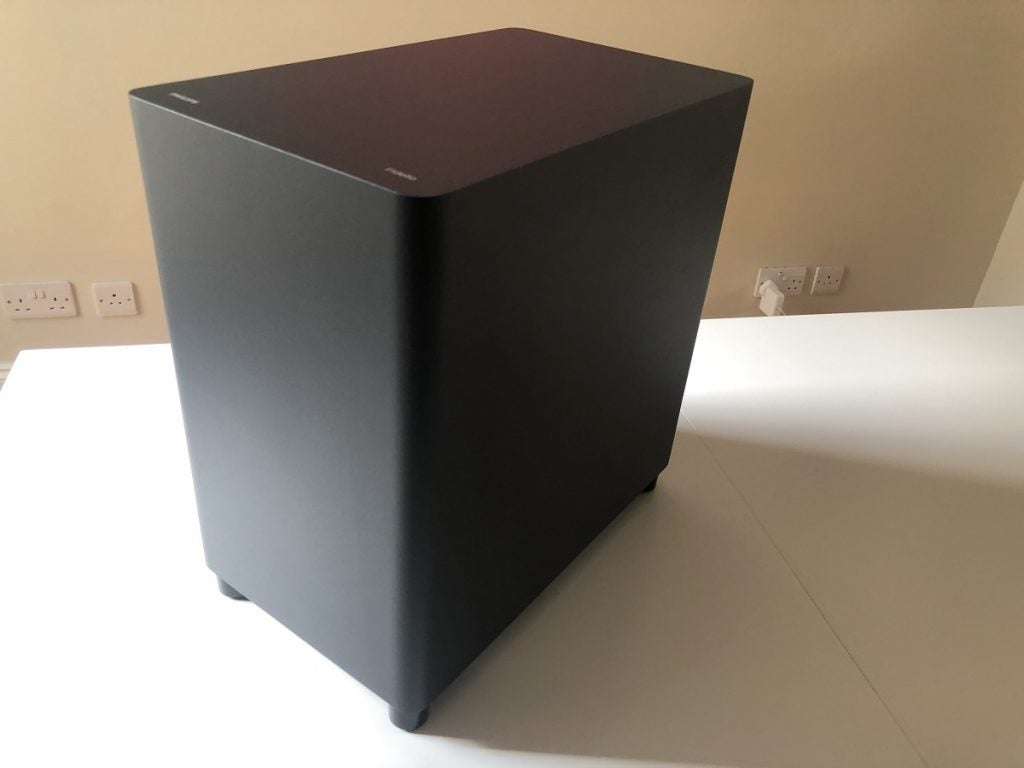
Unhook the modules from either end of the soundbar, snap them into their neat little stands, and position them somewhere appropriate for rear channel speakers, and the B97 becomes a properly immersive listen. The rear channels knit well with the main soundbar, and once you’ve balanced their output correctly, they become a subtle, rather than glaringly obvious, addition to the sonic experience.
‘Subtle’ is a charitable way to describe the contribution of the upward-firing drivers on the main body of the B97. Even when you’ve delved into the ‘PS Fine Tune’ app to max their output level they still seem a little tentative. I’m all for nuance, but the whole point of a Dolby Atmos soundtrack is its additional height – and the Philips understates this aspect of a soundtrack a little too much for my liking.
Tonality is impressively consistent across the board, detail levels are high in every area. And treble response is especially impressive, given that it has plenty of crunch and bite but nothing by way of hardness, even at volume. There’s enough power and enough control to make dynamic peaks and troughs gratifyingly obvious, but also enough dexterity to let the few moments of audio delicacy in this Netflix soundtrack express themselves.

Switch to music and the story, broadly speaking, is the same. The Philips has more than enough energy to attack a Tidal Masters file of St Vincent’s My Baby Wants a Baby with real purpose, and when instructed to deliver a stereo sound can bring authentic focus and separation to the sound. It’s perhaps a little boneless when compared to the heft a movie soundtrack enjoys, but in terms of detail retrieval and time-alignment it’s impressive for a soundbar.
The temptation with a system like this is always to make use of every function – but as far as music is concerned, that’s to be resisted. Yes, the B97 sounds fuller and more immersive when it’s playing through each and every one of its available channels, but it also sounds rather vague and badly organised.
Unless, of course, you’re listening to a Dolby Atmos mix like – the parent St Vincent album, Daddy’s Home, is available as a multi-channel mix on Tidal and it’s an enjoyable (if rather unnatural) listen. Those height channels are still a bit bashful, though.
Should you buy it?
You want an all-in-one with cinema sound as a priority: The B97 is no slouch with music, but it’s real forte is movie sound
You’re expecting obvious height to object-based soundtracks: The B97 does more than hint at the height in an Atmos soundtrack – but not much more
Verdict
If movie sound is your priority, and you’re not expecting shock and awe from the overhead aspect of Dolby Atmos sound, the Philips Fidelio B97 gets an awful lot right.
FAQs
The Philips Fidelio B97 supports 7.1.2 channels of sound through its main bat, subwoofer and detachable modules.





